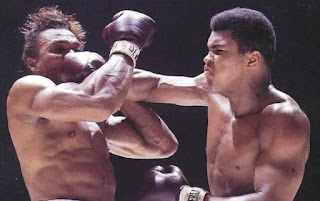Many factors came together to create recognition of Muhammad Ali, who has died aged 74, as “the greatest” boxer in history.
There is no doubt Ali’s determination to overcome racial inequality, his refusal to fight in the Vietnam War, his emergence as a representative of Islam and his highly engaging media persona coalesced to make him by far the most widely known boxer of all time. He came to be popularly regarded as a champion of the oppressed and a seeker of justice for the persecuted. This resonated globally.
Central to the celebrity Ali achieved, though, was his exceptional ability as a boxer.
A unique style
Various boxing authorities have ranked Ali as the best heavyweight boxer in history. He and the legendary Sugar Ray Robinson have been bracketed as the top two across all weight divisions.
Ali won a gold medal (as a light heavyweight) at the 1960 Rome Olympics as the culmination of an amateur boxing career in which he won 100 of 105 bouts.
As a professional, Ali won the world heavyweight championship on three separate occasions over 14 years. He was victorious in 56 of 61 professional bouts, with three of the losses coming late in his career when his athleticism had faded. Sports Illustrated named him as its Sportsman of the 20th Century.
What made Ali such an outstanding exponent of his sport?
It certainly wasn’t sheer strength and power. He was never considered to be among boxing’s hardest punchers and more than one-third of his professional contests lasted their full scheduled duration. Nor was he remarkable in terms of height or weight.
Rather, Ali’s speed, agility, footwork and general athleticism were among the attributes that most distinguished him from other competitors. It was said he was a heavyweight who moved like a lightweight.

